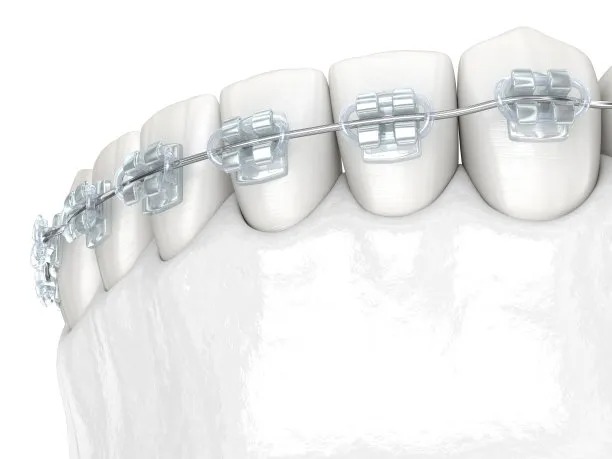Revolutionary Advances in Dental Implant Treatment Improving Patient Outcomes and Enhancing Oral Health for a Brighter Smile
Summary: In recent years, advancements in dental implant treatments have significantly improved patient outcomes and oral health, promising a brighter smile for many. Innovations in materials and technology have enhanced the functionality, longevity, and aesthetic appeal of dental implants. This article explores four key areas of these revolutionary advancements: the evolution of implant materials, the integration of digital technology, innovations in surgical techniques, and advancements in post-operative care. Each of these elements contributes to safer procedures, quicker recovery times, and overall improved patient satisfaction in dental care. By understanding these advancements, patients can make informed decisions regarding their dental health and embrace solutions that lead to greater confidence and a radiant smile.
1. Evolution of Implant Materials

Over the past decade, the materials used in dental implants have undergone remarkable developments, moving from traditional metals to advanced biocompatible substances. Zirconia implants, for example, are now a popular choice due to their aesthetic qualities and resistance to corrosion. Unlike titanium, zirconia blends seamlessly with natural teeth color, providing a more attractive appearance for patients concerned about visible dental work.
Moreover, advances in surface treatments have enhanced the osseointegration process—where the implant fuses with bone. New coatings and textures improve how implants interact with surrounding bone, resulting in quicker healing and better stability. This innovation reduces the risk of implant failure and encourages long-term success, transforming dental implant procedures into more reliable restorative options.
This evolution in materials not only enhances the functionality of dental implants but also significantly contributes to patient comfort. With options tailored to individual needs, patients can now enjoy a custom experience that aligns with both their health requirements and aesthetic desires.
2. Integration of Digital Technology
The integration of digital technology has revolutionized dental implant procedures, making them faster, more accurate, and less invasive. 3D imaging and computer-aided design allow for precise planning and placement of implants, which minimizes potential complications and enhances overall outcomes. Surgeons can visualize the bone structure and determine the ideal location for implants before the actual procedure, ensuring a more targeted approach.
Additionally, the use of digital impressions replaces traditional molds, offering a more comfortable experience for patients while achieving greater accuracy. This technology also facilitates the development of customized prosthetics that fit better and perform optimally. By reducing the chances of remakes and adjustments, digital technology ultimately leads to a streamlined process that saves both time and resources for dental clinics and patients alike.
As a result of these advancements, patients experience reduced anxiety during procedures due to the improved efficiency and precision offered by digital tools. This has led to a surge in patient satisfaction and a growing trust in dental implant treatments.
3. Innovations in Surgical Techniques
Recent innovations in surgical techniques have also played a crucial role in improving dental implant treatments. Minimally invasive surgery, including techniques like flapless implant placement, allows for faster recovery times and less discomfort. By eliminating the need for extensive incisions, patients can benefit from reduced swelling and quicker healing periods.
Additionally, guided implant surgery employs sophisticated templates to direct the placement process, further enhancing procedural accuracy. This technique allows for individualized treatment plans based on each patients specific anatomy, increasing the chances of successful outcomes. Enhanced precision leads to optimal positioning of implants, which is critical for achieving a natural look and function.
These surgical advancements not only improve the overall quality of care but also bolster patient confidence in undergoing dental procedures. As techniques continue to evolve and improve, patients can expect increasingly positive experiences with dental implant interventions.
4. Advancements in Post-Operative Care
Finally, advances in post-operative care have transformed patient experiences following dental implant procedures. Innovative pain management techniques and recovery protocols have mitigated discomfort and expedited healing. This includes the use of medications tailored to individual patient needs and the development of cooling devices to reduce swelling and inflammation.
Furthermore, enhanced follow-up protocols ensure that patients receive continuous support and care. Telemedicine has also emerged as an effective tool, allowing for virtual consultations and monitoring, which fosters a sense of connection and reassurance for patients during recovery. This accessibility enables prompt responses to any concerns, further enhancing patient satisfaction.
With improvements in post-operative care, patients can return to their regular activities sooner and with more confidence. The comprehensive care provided at this stage is vital for maintaining the longevity and success of dental implants, ultimately contributing to improved oral health.
Summary:
In summary, the revolutionary advances in dental implant treatments have profoundly impacted patient outcomes, focusing on enhancing oral health and confidence in one’s smile. From material innovations and digital integration to enhanced surgical techniques and post-operative care, these advancements have led to an era of safer and more effective dental interventions. As a result, patients can expect not just improvements in oral health but also an overall enhancement in their quality of life.
This article is compiled by Vickong Dental and the content is for reference only.


